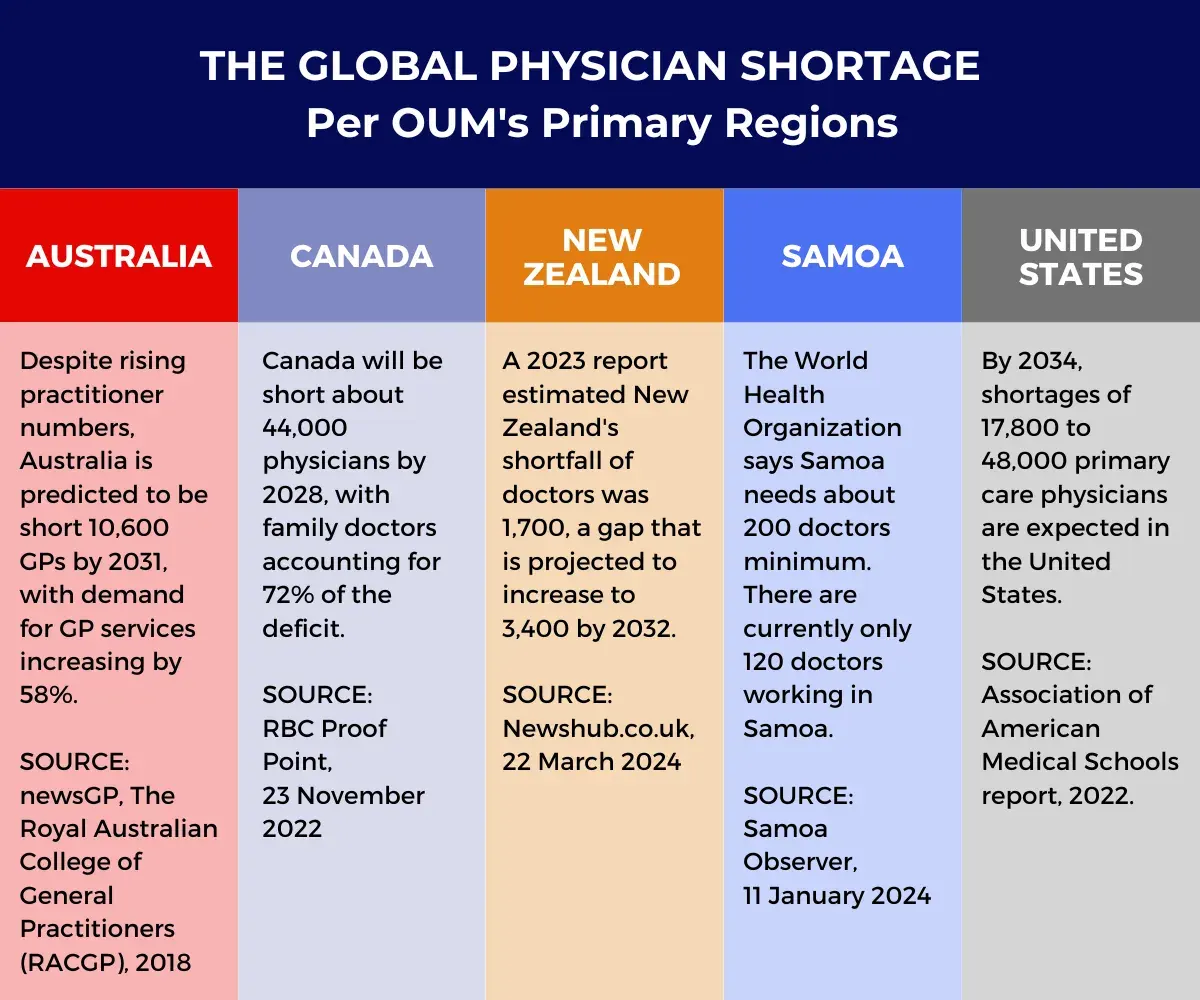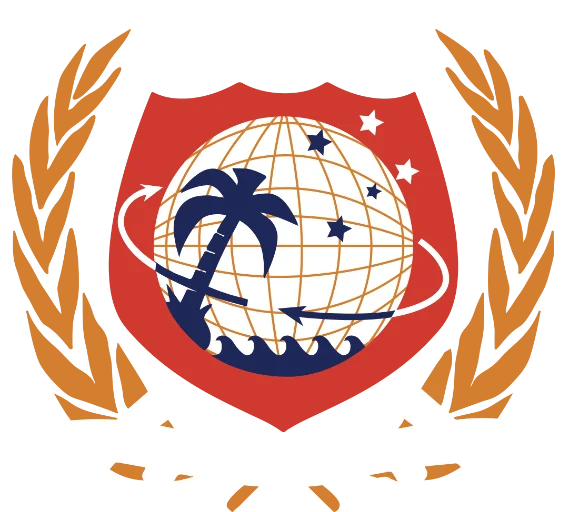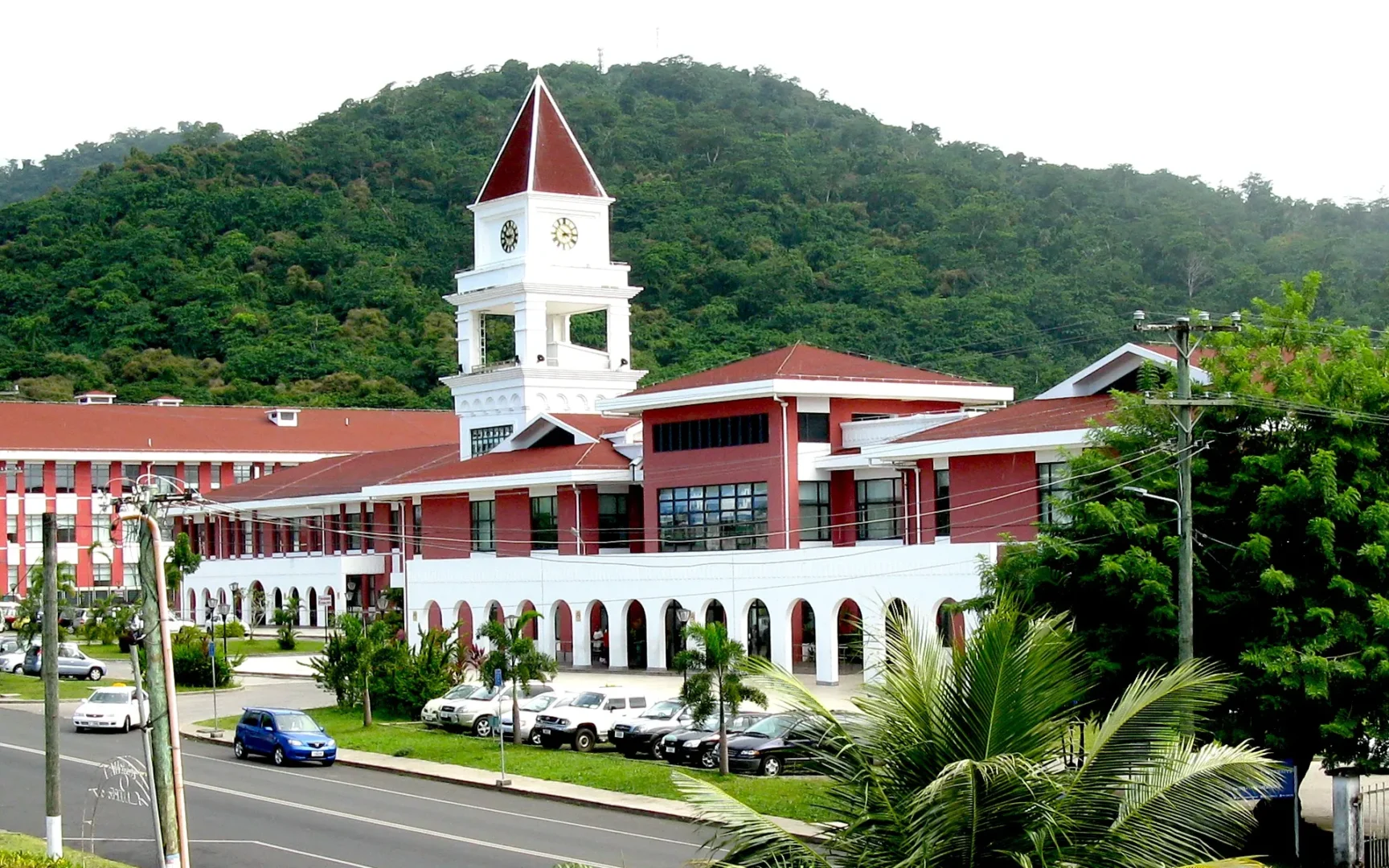The physician shortage is a global issue. Most countries don’t have enough, and their medical schools have been unable to train them fast enough to meet supply.
Access to medical education and growing populations — such as the geriatric demographic which requires more services — are just two factors which contribute to the shortage. Today’s shortage of doctors is, by no means, unique to one country or region. It is an international problem that is not new. So, how many physicians are actually needed?
THE GLOBAL PHYSICIAN SHORTAGE – Per OUM’s Primary Regions

Oceania University of Medicine’s (OUM) founding in 2002 stemmed from the need for more doctors in Samoa and other areas of the South Pacific. Over the years, its reach has expanded to students from more countries that need additional providers, while also bringing the study of Medicine to those with limited access to traditional brick-and-mortar medical schools.
“Since long before Zoom classes became the norm during COVID, our hybrid curriculum had made medical school available to qualified individuals who simply could not relocate somewhere for four or five years in order to attend medical school,” says Ontario, Canada-based Associate Professor Nicolette McGuire, PhD, OUM’s Associate Dean, Student Engagement and Deputy Director of Pre-Clinical Education and Faculty. “Many of our students have had medical school in the back of their mind since they were children, but life happened and they took different paths. Even though many of our students were accepted at conventional medical schools, their work and family responsibilities simply made that dream unattainable,” she adds.
OUM’s hybrid curriculum makes studying Medicine more accessible
Could OUM’s model make medical education accessible to more prospective medical students? Those in underserved or remote communities far from medical school campuses? Those who, perhaps, settled for a different career, but now could pursue the medical degree they always wanted thanks to distance learning?
“OUM’s pre-clinical curriculum is delivered via live, interactive virtual classrooms during the first two years, guiding students in their mastery of basic sciences and system-based medicine,” says Dr. McGuire, who joined the faculty in 2012 as an Endocrine System lecturer. “Learning the basic sciences in this online environment during their first two years provides more individuals with the opportunity to study Medicine, allows them to plan for their final two years of medical school’s mandatory hands-on clinical rotations, and will, ultimately, put more licensed, practicing physicians into the global medical community,” she says.
Clinical Training at OUM: Diverse Opportunities and Global Impact
For clinical training, OUM has a broad network of hospitals and clinics throughout its primary regions, anchored by its primary teaching hospital in Apia, Samoa — Tupua Tamasese Meaole (TTM) Hospital at the country’s National Health Complex. All OUM students are required to complete at least one four-week elective rotation at TTM Hospital as a graduation requirement. Some students have such positive experiences that they choose to complete more rotations in Samoa.
“The first-hand experience I gained completing rotations in Samoa gave me a great foundation for rural and remote residency training and now to work in rural Canada as an attending,” says Sonja Bruin, MBBS, CCFP-EM, OUM Class of 2014 and a Family Physician in rural Manitoba, Canada. “Working in a variety of different areas throughout Samoa’s islands, assisting with surgical procedures, performing deliveries, working in emergency, pediatrics and internal medicine departments really allowed me to hone my skills and made me comfortable working in remote settings. The rewards of working in rural settings are many. The close community relationships you establish are rewarding and the environment promotes autonomy and further enhancement of clinical skills.”
Making medical school more accessible has the potential to positively impact the global physician shortage, regardless of the location, says Dr. McGuire, which, in turn, will assist underserved and marginalized populations
“More accessible medical education also serves a sometimes-neglected higher education demographic: non-traditional medical students. Our incredible students have life experience, and many have work experience in health care, science, engineering, teaching, and related fields,” she adds, “These students bring additional expertise to the classroom, fresh perspective, and unparalleled dedication to the practice of medicine across the globe.”


